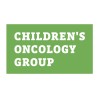
Clinical Trial to Evaluate the Safety, Tolerability, Pharmacokinetics and Pharmacodynamics of Tuspetinib...
Relapsed or Refractory Acute Myeloid LeukemiaA Phase 1/2, Open-label, Multicenter, Dose Escalation and Expansion Study of the Safety, Tolerability, Pharmacokinetics, and Pharmacodynamics of Tuspetinib (HM43239) in Patients with Relapsed or Refractory Acute Myeloid Leukemia (AML)

The Incidence of Hepatitis B in Diffuse Large B-Cell Lymphoma/Chronic Lymphoid Leukemia HBsAg-positive...
Large-B-cell Diffuse LymphomaChronic Lymphoid LeukemiaIn this study, we will evaluate the incidence of hepatitis B virus reactivation within the first 6 months of treatment with rituximab, standard chemotherapy and TAF in patients with diffuse Large B-Cell Lymphoma/Chronic Lymphoid Leukemia HBsAg-positive.

A Prospective Multicenter Clinical Trial of MRD-based Treatment Strategy in Children and Young Adults...
Acute Myeloid LeukemiaChildhoodMinimal-residual disease (MRD) will be measured either by flow cytometry, or polymerase chain reaction (PCR) methods, in 3 check-points and it will be one of the decision-making control parameter for the optimal therapy tactics. Patients with initially high-risk group and those with high MRD after 2 initial courses of chemotherapy will be assigned to the allogenic transplantation of the hematopoietic stem cells from Human Leucocyte Antigen (HLA) matched or haploidentical family donors.

MB-CART19.1 r/r CD19+ B-cell Malignancies (BCM)
Acute Lymphoblastic Leukemia RecurrentB-cell Lymphoma Recurrent3 moreThis is a phase l/ll multi-centric, single arm, prospective open, dose-escalation study in patients with relapsed or refractory CD19-positive B cell malignancies (ALL, NHL, CLL). The trial will include adult and pediatric patients. The trial consists of 2 parts: Part I and Part II. In total approximately 48 patients will be included in Part I of the trial. There will be three individual cohorts, defined by disease biology: pediatric ALL and aggressive pediatric NHL (Cohort 1), adult ALL (Cohort 2) and adult NHL/CLL (Cohort 3).

Safety and Efficacy of Quizartinib in Children and Young Adults With Acute Myeloid Leukemia (AML),...
Acute Myeloid LeukemiaQuizartinib is an experimental drug. It is not approved for regular use. It can only be used in medical research. Children or young adults with a certain kind of blood cancer (FLT3-ITD AML) might be able to join this study if it has come back after remission or is not responding to treatment.

A Study of Ivosidenib or Enasidenib in Combination With Induction Therapy and Consolidation Therapy,...
Acute Myeloid LeukemiaMyelodysplastic Syndrome With Excess Blasts-2AML and MDS-EB2 are malignancies of the bone marrow. The standard treatment for these diseases is chemotherapy. Patients participating have a special type of this disease because the leukemia cells (blasts) have developed an error in the genetic material (DNA). This error is called an IDH1 mutation or an IDH2 mutation (a mutation is a change in the DNA), which leads to changes in specific substances in the leukemia cells. This trial will investigate whether the addition of the new drugs Ivosidenib (for patients with IDH1 mutation) or Enasidenib (for patients with IDH2 mutation) to the standard treatment of chemotherapy controle the disease more effectively and for a longer period.

Allogeneic Hematopoietic Cell Transplantation From HLA-matched Donor After Flu-Mel-PTCy Versus Flu-Mel-ATG...
Acute Myeloid Leukemia in RemissionMyelodysplastic Syndromes8 moreThe present project aims at comparing two conditioning regimens (FM-PTCy vs FM-ATG). The hypothesis is that one or the two regimens will lead to a 2-year cGRFS rate improvement from 30% (the cGRFS rate with FM without ATG/PTCy) to 45% (Pick-a-winner phase 2 randomized study).

De-escalation and TFR Study in CML Patients Treated With Nilotinib Followed by a Second Attempt...
Chronic Myeloid LeukemiaThis study is constituted of two stage: Treatment-Free Remission 1 (TFR1) stage and Treatment-Free Remission 2 (TFR2) stage. The purpose of the TFR1 stage is to assess the effect of nilotinib reduced to half the standard dose for 12 months on treatment-free remission in patients with Chronic Myeloid Leukemia - Chronic Phase (CML-CP) treated with first-line nilotinib who reached a sustained deep molecular response before entering the study. The purpose of the TFR2 stage is to evaluate whether the use of asciminib in combination with nilotinib after failure of a first attempt at TFR can lead to higher and more durable TFR rates after a second attempt at TKI discontinuation than those reported in other studies.

Inotuzumab Ozogamicin and Post-Induction Chemotherapy in Treating Patients With High-Risk B-ALL,...
B Acute Lymphoblastic LeukemiaB Lymphoblastic Lymphoma3 moreThis phase III trial studies whether inotuzumab ozogamicin added to post-induction chemotherapy for patients with High-Risk B-cell Acute Lymphoblastic Leukemia (B-ALL) improves outcomes. This trial also studies the outcomes of patients with mixed phenotype acute leukemia (MPAL), and B-lymphoblastic lymphoma (B-LLy) when treated with ALL therapy without inotuzumab ozogamicin. Inotuzumab ozogamicin is a monoclonal antibody, called inotuzumab, linked to a type of chemotherapy called calicheamicin. Inotuzumab attaches to cancer cells in a targeted way and delivers calicheamicin to kill them. Other drugs used in the chemotherapy regimen, such as cyclophosphamide, cytarabine, dexamethasone, doxorubicin, daunorubicin, methotrexate, leucovorin, mercaptopurine, prednisone, thioguanine, vincristine, and pegaspargase or calaspargase pegol work in different ways to stop the growth of cancer cells, either by killing the cells, by stopping them from dividing, or by stopping them from spreading. This trial will also study the outcomes of patients with mixed phenotype acute leukemia (MPAL) and disseminated B lymphoblastic lymphoma (B-LLy) when treated with high-risk ALL chemotherapy. The overall goal of this study is to understand if adding inotuzumab ozogamicin to standard of care chemotherapy maintains or improves outcomes in High Risk B-cell Acute Lymphoblastic Leukemia (HR B-ALL). The first part of the study includes the first two phases of therapy: Induction and Consolidation. This part will collect information on the leukemia, as well as the effects of the initial treatment, in order to classify patients into post-consolidation treatment groups. On the second part of this study, patients will receive the remainder of the chemotherapy cycles (interim maintenance I, delayed intensification, interim maintenance II, maintenance), with some patients randomized to receive inotuzumab. Other aims of this study include investigating whether treating both males and females with the same duration of chemotherapy maintains outcomes for males who have previously been treated for an additional year compared to girls, as well as to evaluate the best ways to help patients adhere to oral chemotherapy regimens. Finally, this study will be the first to track the outcomes of subjects with disseminated B-cell Lymphoblastic Leukemia (B-LLy) or Mixed Phenotype Acute Leukemia (MPAL) when treated with B-ALL chemotherapy.

Multi-CAR T Cell Therapy Targeting CD7-positive Malignancies
T-cell Acute Lymphoblastic LeukemiaT-cell Acute Lymphoblastic Lymphoma2 moreThe purpose of this clinical trial is to assess the feasibility, safety and efficacy of CAR T cell therapy against CD7-positive hematological malignancies using CD7 specific CAR T cells. The study also aims to learn more about the function of CD7 CAR T cells and their persistence in patients of hematological malignancies.
